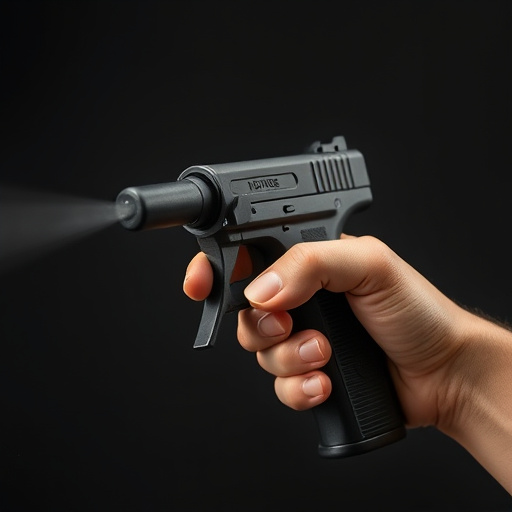Mace pepper spray guns, compact self-defense tools using capsaicin to temporarily incapacitate assailants, are popular among individuals seeking personal protection. Safe use requires understanding mechanics, aiming practice, and avoiding accidental activation. Legal regulations vary widely; adhering to local laws is crucial. Best practices emphasize safety, including training, understanding spray range, de-escalation techniques, regular maintenance, and proper disposal methods.
“Uncover the power of self-defense with a Mace pepper spray gun—a compact, powerful tool designed to deter potential threats. This comprehensive guide explores everything you need to know about this tactical device. From understanding its active ingredient, capsaicin, to mastering safe handling and legal awareness, we demystify the Mace pepper spray gun. Learn how to protect yourself effectively while navigating the important considerations for responsible use. Get ready to empower yourself with knowledge.”
What is Mace Pepper Spray Gun?
Mace pepper spray guns are non-lethal self-defense tools designed to incapacitate an assailant temporarily through the use of capsaicin, the active ingredient found in chili peppers. These compact and easily concealable devices emit a powerful stream of pepper spray that can disable an attacker, giving the user valuable time to escape or summon help. They are popular among individuals seeking personal protection while walking alone, running errands, or engaging in outdoor activities.
The term “Mace” refers to a specific brand of pepper spray, but it has become a common moniker for similar self-defense sprays. These guns typically use a pressurized can containing oleoresin capsicum (OC) or capsaicin, which is released when the trigger is activated. The spray irritates the eyes, nose, and respiratory system, leading to temporary blindness, coughing, and difficulty breathing. This enables the user to deter an attacker and create a safe escape route.
How to Use and Carry Mace Pepper Spray Gun Safely
Using a mace pepper spray gun safely involves understanding its mechanics and following proper protocols. First, familiarize yourself with the trigger mechanism; most models require a firm, quick pressure to deploy the spray. Practice aiming at a target, like a wall or tree, to get a feel for the range and distribution of the spray. Always keep your finger off the trigger until you intend to use it.
When carrying a mace pepper spray gun, store it in a secure, easily accessible location, like an inside pocket or belt holster. Keep it out of reach of children and unaware individuals. Ensure regular maintenance by checking the can for damage or corrosion, and replacing the nozzle if necessary. Remember, self-defense is a personal choice; use only as a last resort when facing imminent threat.
Legal Considerations and Best Practices for Mace Pepper Spray Gun Use
When considering the legal aspects of mace pepper spray gun use, it’s crucial to understand that regulations vary widely depending on your location. In many areas, owning and carrying a mace pepper spray gun is legal, but strict guidelines exist regarding its use. For instance, some jurisdictions require a permit or registration for possession, while others have restrictions on where and how it can be employed. It’s essential to research and comply with local laws to avoid legal repercussions.
Best practices for mace pepper spray gun users emphasize safety and responsible application. This includes ensuring proper training in its use, understanding the range and effects of the spray, and knowing when and how to deploy it effectively. Users should also be aware of de-escalation techniques to prevent unnecessary confrontations. Regular maintenance of the device is vital, including keeping it in a secure location and ensuring the contents remain intact. Additionally, being familiar with the spray’s expiration date and proper disposal methods is essential for both safety and environmental considerations.
